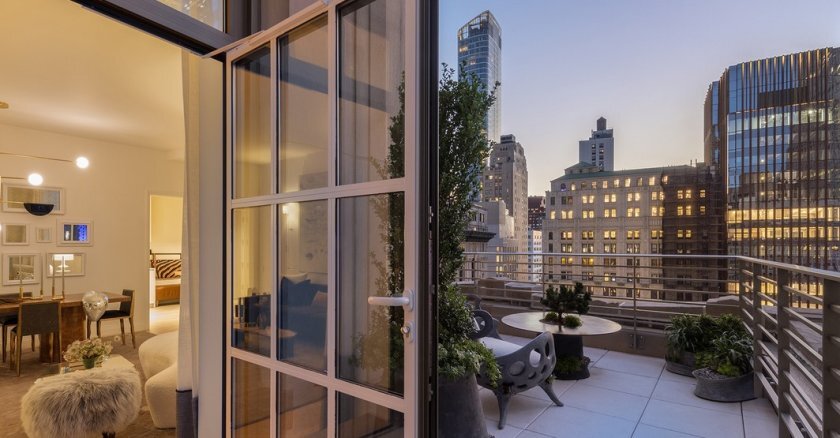And if you’ve been driving around your community’s commercial streets, you may have noticed something else: a proliferation of coffee kiosks and drive-throughs with at most a few chairs outside, and often not even any of those.
One can write these changes off simply as a rational response to early COVID-19 realities, and a sluggish response to later developments. But it’s also possible to see changes like this as something much more significant. In the last couple of decades, comfortable coffeehouses have come into their own as a fundamental ingredient of local community — along with restaurants, libraries, entertainment venues, neighborhood retail and quite a few other establishments. When we lose them, or see them depleted, we lose something much more important than a collection of furniture.
Michael Berne, who operates a respected retail consulting firm, not only believes this but has devoted much of his time to documenting what has happened. He tells us that we are witnessing the emergence of “the UCD” — the utilitarian caffeine dispenser — which threatens the existence of a vital community institution. One company, Dutch Brothers Coffee, now runs more than 600 kiosks in 14 states, making it the third-largest coffee chain in America after Starbucks and Dunkin’. A Dutch Brothers store, Berne reports, has no indoor seating at all; it is a small shack with a window or two and perhaps a couple of outdoor tables burdened by the exhaust fumes of the drive-through.
Starbucks, which was initially opposed to the whole drive-through idea, now has drive-through lanes in a third of its North American properties and is putting them into 90 percent of its new locations, many of which are drive-through only. Caribou Coffee has launched about 50 “Caribou Cabin” installations with drive-up windows and no interior at all. Foot traffic at most coffee company units is back close to what it was before the pandemic, but by some estimates 80 percent of the business is take-out. The UCD, Berne concludes, “casts aside the social function and focuses primarily if not solely on the high-margin transaction.”
WE CAN ALL BE GRATEFUL TO BERNE for giving us the numbers to document what many of us have been suspecting might be true. But it is also important to consider what the coffeehouse has contributed to urban life and sociability over a period of several centuries. So I hope you won’t mind my dipping into a little history.
Coffee invaded northern Europe from Turkey in the mid-17th century, and the coffeehouse as a social center blossomed in Restoration London a few decades later. It was the place where commercial traders could exchange information and learn the latest news about their global shipping investments. Lloyd’s of London launched the modern insurance company from a coffeehouse along the Thames in 1688.

Beguiling as European coffeehouse life must have been, it never caught on in this country. Americans drank coffee, but they did it largely at home. In much of the country but especially in the cold-weather Midwest, residents invited each other to their living rooms to spend the day drinking multiple cups of weak and tasteless coffee, partly just to stay warm. The bland product sold in supermarkets wasn’t appealing enough to lure them out in the cold to drink the stuff at a commercial café.
THAT ALL CHANGED IN THE 1980s, for at least two reasons. One of them was Starbucks. Suddenly there was a place that actually served good coffee, and offered patrons a comfortable place to relax. Critics often draw analogies between Starbucks and Amazon as corporate giants that upended local business, but the argument is misguided. Amazon really did put thousands of family-owned local retail stores out of operation, but Starbucks did the opposite. It encouraged coffee-loving local entrepreneurs to set up shop on their own, frequently with comfortable sofas and communal tables that encouraged drinkers to while away hours.
At first this phenomenon was confined largely to big cities. But by the early years of this century even the more remote American small towns were likely to feature at least one locally owned establishment where residents could relax, share the day’s news and talk politics. It wasn’t Vienna or Restoration London, but it was something almost entirely new in this country.
Then there was Ray Oldenburg. His 1989 book, The Great Good Place, made the simple and compelling argument that Americans living apart from each other in soulless suburbs needed someplace to spend time besides their workplaces and their homes. He wasn’t talking only about coffeehouses — he also wrote about pubs, beauty parlors, general stores and a variety of other gathering places — but he insisted that the absence of these “third places” put too much pressure on the home, the office and primary relationships, leading to stress and discontent that the suffering suburbanites often had trouble dealing with. “The third place,” Oldenburg wrote, “is more than a shelter against the teardrops of life’s tedium and more than a breather on the sidelines of the rat race.” To him, the third place was an emblem of civic well-being.
Ray Oldenburg was a prophet. His book quickly became a word-of-mouth classic. It didn’t lead to a resurgence of beauty parlors or general stores, but it did help to convince readers all over the country that their cities and towns needed pleasant gathering places to spark community sociability and good feeling. And so “third places” became a familiar idea, and coffeehouse culture was reborn. It became a staple of movies and television. The “Central Perk” coffee café that served as a clubhouse on “Friends” was the kind of institution millions of us could identify with.
THE QUESTION IS WHAT HAPPENS NOW, as the COVID-19 pandemic recedes and many of the inviting coffeehouses are disappearing or contracting. Berne suggests some possibilities, some of which are being tried in a few places. Washington state has a Third Places Fund that provides up to $75,000 for small communities that reuse old properties for that purpose. Similarly, in four New England states, a public entity called the Northern Border Regional Commission is supporting third places as part of a historic preservation program in rural areas.
But tying coffeehouses or other third places to historic revival sharply limits the number of new ones that might be created. And all of this raises the fundamental question of just what constitutes a third place. A coffee shop with comfortable sofas certainly qualifies. What about a library or a gym? Somehow that needs to be worked out. Whose job should it be to make those decisions? We shouldn’t be handing money to enterprises that could thrive without it.
Then there’s outright community ownership. A fair number of small towns in the Midwest have used public money to take over struggling cafés and run them as public enterprises. But these efforts usually involve the last remaining place to eat in a tiny community that doesn’t have much else to bring people together. Public ownership as means of saving coffeehouses from disappearing is likely to be a tough sell in most places.
And there is crowdsourcing. A café in New York is offering patrons investment opportunities for as little as $100 as a way to raise $5 million for a national expansion program.
Berne gives due credence to all of these efforts, but he ends up sounding mildly hopeful rather than genuinely optimistic. “With the rise of the utilitarian caffeine dispenser," he admits, “the future for third-place coffeehouses suddenly seems less certain.”
There is no reason why existing coffeehouses couldn’t retool their interiors to make them as comfortable and inviting as many of them were in pre-COVID days. But this could be betting on a long shot. Coffee chains have discovered that grab-and-go is an effective way to make money, and returning to an older format is unlikely to be at the top of their strategy list. That leaves the remaining independent coffeehouses with their battered old sofas to keep the sociability revival going. Are there enough of them to make for a successful business plan? We will have to see.
But the best guess is that something will emerge. People want community, and they want third places. Fifty years ago, hardly anyone would have imagined the depth of the coffeehouse era that was then getting started. But it happened. My one confident prediction is that we will be surprised again.
This has been updated to correct the number of “Caribou Cabin” installations.














